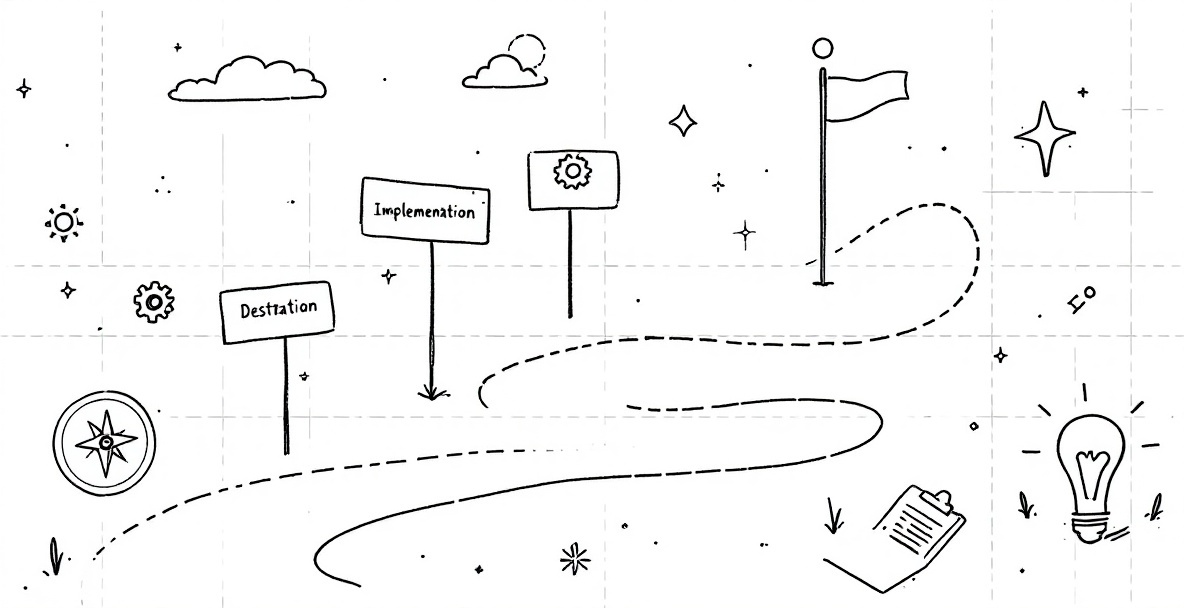In a world where content demands continue to outpace human capacity, AI content generation tools have evolved from experimental novelties to essential components of modern marketing stacks. The most innovative platforms now deliver content that’s nearly indistinguishable from human-written work, while dramatically reducing production time and costs. As we look at the transformative solutions shaping marketing in 2025, it’s clear that organizations embracing these technologies are gaining significant competitive advantages in the battle for audience attention and engagement.
The Content Creation Revolution: Why AI is Becoming Indispensable

The marketing landscape has fundamentally changed. Today’s digital channels require constant content refreshment, with consumers expecting personalized, relevant information delivered consistently across multiple touchpoints. This exponential growth in content needs has created both challenges and opportunities for forward-thinking marketers.
The Content Scaling Challenge
Marketing teams face unprecedented pressure to produce more content than ever before. Blog posts, social media updates, email newsletters, product descriptions, and landing pages all demand attention – often simultaneously. Yet budgets haven’t scaled in proportion to these demands, creating a tension that traditional content workflows simply cannot resolve.
The numbers reveal the struggle: most marketing departments now manage 5-10 digital channels, each requiring unique content formatted specifically for that platform. Meanwhile, consumer expectations continue rising, with personalization no longer optional but expected. This content multiplication effect has created bottlenecks in production pipelines that human writers alone cannot overcome.
Content velocity – the speed at which businesses can ideate, create, publish and iterate – has become a critical competitive differentiator. Organizations that can maintain consistent quality while accelerating production gain significant advantages in market visibility and customer engagement.
The Promise of AI-Powered Solutions
AI content generation tools have evolved dramatically in recent years, moving from awkward text completion to sophisticated content creation systems capable of producing nuanced, contextually-appropriate material. According to Gartner’s analysis of AI in marketing, these platforms leverage advanced language models to generate human-like content while dramatically reducing production time and resource requirements.
The most effective AI content platforms don’t aim to replace human creativity but to amplify it. They handle routine content production, repurposing, and optimization tasks that previously consumed writers’ time, allowing creative professionals to focus on high-value strategic work instead.
Modern AI writing platforms offer compelling benefits: reduced content production costs (typically 30-70% savings), dramatically faster turnaround times, and the ability to scale content production without proportional increases in headcount. For businesses facing growing content demands with limited resources, these advantages have become impossible to ignore.
Top 10 AI Content Generation Platforms Reshaping Marketing

The AI content generation landscape spans from enterprise-grade comprehensive solutions to specialized tools for specific use cases. Here’s how the market breaks down in 2025:
Enterprise-Grade Solutions
- Jasper has established itself as a dominant enterprise AI content solution, offering comprehensive features for large-scale content operations. Their platform combines long-form content generation with built-in SEO tools, brand voice customization, and multi-language support. What distinguishes Jasper is its robust collaboration features and enterprise-grade security controls, making it suitable for large organizations with complex compliance requirements.
- SeoFlow stands out as an end-to-end content solution that handles the entire content workflow from ideation through publication. Our platform doesn’t just generate high-quality content – it integrates sophisticated SEO optimization, automated publishing across multiple platforms, and intelligent content scheduling. What makes our solution unique is how we’ve streamlined the entire content lifecycle into a cohesive system, eliminating the need for multiple disconnected tools. The platform’s ability to maintain consistent brand voice while adapting to different content formats has made it particularly popular among multi-channel marketers.
- ContentFuse (fictional) has developed proprietary technology that specializes in creating deeply researched long-form content that incorporates subject matter expertise. Their unique approach combines AI generation with automated fact-checking and citation management, resulting in content that maintains academic standards while reading naturally. Their platform includes integration with academic databases and industry research repositories, making it especially valuable for sectors requiring authoritative content.
Mid-Market Innovators
- Writesonic has carved out a strong position by focusing on conversion-oriented content. Their platform excels at generating product descriptions, landing pages, and ad copy optimized for performance metrics. What separates Writesonic is their A/B testing functionality that automatically improves content based on performance data, creating a continuous optimization loop.
- Hyperwrite provides an AI assistant approach that acts as a collaborative partner rather than a replacement for human writers. Their interface allows content creators to guide the AI through conversational prompts, resulting in highly customized outputs. This collaborative approach has made Hyperwrite particularly popular with organizations that want to maintain strong human oversight while accelerating production.
- Copysmith has focused on e-commerce content at scale, with specialized capabilities for product descriptions, category pages, and promotional materials. Their platform includes integrations with major e-commerce platforms and PIM systems, allowing for automated content updates when product details change. This tight integration with commerce systems has made them a go-to solution for retailers managing large product catalogs.
- Narrato combines AI content generation with comprehensive workflow management, making it ideal for organizations with complex approval processes. Their platform includes customizable approval workflows, editorial calendars, and content governance tools that ensure quality and compliance throughout the content lifecycle.
Budget-Friendly Options
- Simplified offers an accessible entry point for small businesses and solopreneurs, combining basic AI content generation with design tools in an affordable package. Their platform’s intuitive interface and template-based approach allow users without technical expertise to create both written and visual content efficiently.
- WordAI specializes in content repurposing and transformation, helping businesses maximize value from existing material. Their technology can convert a single piece of content into multiple formats, rewrite text to avoid plagiarism issues, and adapt messaging for different channels or audience segments.
- TextCortex offers a Chrome extension-based approach that brings AI writing capabilities directly into the tools marketers already use. This browser-based model allows users to generate content within Google Docs, WordPress, and other web applications without switching contexts, creating a seamless experience for teams with established workflows.
Maximizing ROI with Content Workflow Optimization Tools

Generating content is only part of the equation – organizing the complete content lifecycle is equally crucial for realizing the full potential of AI content investments. As Forrester’s research on generative AI indicates, the most successful organizations are implementing comprehensive workflow solutions that connect generation with distribution and performance tracking.
Integration Strategies
Effective content workflow requires seamless connections between AI generation tools and your existing marketing technology stack. The most valuable integrations link content creation with CMS platforms, social media management tools, and analytics systems to create closed-loop workflows.
Leading organizations are implementing API-based connections that allow content to flow automatically between systems without manual intervention. For example, connecting your AI generation platform to your CMS enables automated publishing, while integration with analytics tools provides performance data that can inform future content creation.
Cross-platform consistency becomes manageable when your workflow tools maintain brand voice, terminology, and messaging frameworks across channels. Look for platforms that offer centralized content repositories and style guides that can be referenced across the generation process, ensuring coherence regardless of which channel content appears in.
Quality Control Measures
As AI content becomes more prevalent, quality assurance processes become increasingly important. Effective organizations are implementing multi-stage review workflows that combine automated checks with strategic human oversight.
Automated quality controls should include plagiarism detection, readability scoring, SEO compliance checks, and brand voice alignment. These technological guardrails ensure baseline quality standards without requiring extensive manual review of every content piece.
Human reviewers should focus on strategic elements rather than mechanical corrections – evaluating messaging alignment, audience relevance, and business objective support. This focused approach allows subject matter experts to add maximum value while AI handles routine quality concerns.
Performance Metrics
The ultimate measure of content effectiveness isn’t production efficiency but business impact. Organizations seeing the greatest ROI from AI content tools implement comprehensive measurement frameworks that track content performance across the customer journey.
Key metrics to monitor include engagement metrics (time on page, scroll depth), conversion contributions (attribution modeling), search visibility improvements, and audience growth indicators. More sophisticated organizations are developing content attribution models that connect specific pieces to revenue generation.
Regular performance reviews should inform both tactical adjustments (optimizing underperforming content) and strategic decisions (resource allocation across content types). This data-driven approach ensures continuous improvement in both content quality and business results.
Future-Proofing Your Content Strategy

The AI content landscape continues evolving rapidly, with new capabilities emerging regularly. Gartner’s research on capitalizing on AI disruption suggests that organizations that maintain adaptable strategies will be best positioned to capitalize on these innovations while managing potential challenges.
Upcoming AI Innovations
Several emerging technologies are poised to further transform AI content generation in the coming years. Multimodal AI systems that combine text generation with image, video, and audio creation are becoming increasingly sophisticated, enabling truly integrated content experiences across formats.
Hyper-personalization capabilities continue advancing, with AI systems that can generate variations tailored to individual user characteristics, behavioral patterns, and contextual factors. These technologies will enable one-to-one content experiences at scale that were previously impossible.
Context-aware generation represents another frontier, with AI systems gaining ability to incorporate real-time data, current events, and situational factors into generated content. This capability will make automated content feel more timely and relevant than ever before.
Adaptation Strategies
To maintain competitive advantage as the technology landscape evolves, organizations should adopt flexible frameworks rather than rigid processes. The most successful teams implement modular content architectures that can incorporate new capabilities as they emerge without requiring complete workflow overhauls.
Automated content generation works best within clear strategic boundaries. Establish governance frameworks that define appropriate use cases, quality standards, and ethical guidelines for AI-generated content. These guardrails ensure technology serves your strategic objectives rather than dictating them.
Continuous learning should be built into your approach. Dedicate resources to ongoing experimentation with emerging capabilities, regular evaluation of vendor innovations, and cross-functional knowledge sharing about effective applications. This learning mindset will keep your organization at the forefront of content technology.
Taking Action: Next Steps for Implementation
Moving from interest to implementation requires systematic planning and execution. Here’s how to translate AI content potential into tangible business results:
Platform Selection Framework
Begin by assessing your organization’s specific content needs and constraints. Consider content volume requirements, complexity of subject matter, technical integration needs, and budget parameters. Different organizations require different solutions based on these fundamental factors.
Evaluate potential platforms against both current needs and future growth plans. Will the solution scale with your content volume? Can it adapt to new channels or markets you might enter? Does it offer the flexibility to evolve as your strategy develops?
Conduct structured testing of promising platforms using real-world content scenarios from your organization. Move beyond generic demos to evaluate performance on your specific content types, brand voice requirements, and subject matter complexity. This hands-on assessment reveals practical suitability better than feature comparisons alone.
Implementation Roadmap
Successful adoption typically follows a phased approach rather than immediate enterprise-wide deployment. Begin with carefully selected pilot projects that offer visible success potential while limiting implementation complexity. These initial wins build organizational confidence and provide learning opportunities.
Develop clear goals and success metrics for your implementation. Define what specific outcomes constitute success – whether production efficiency gains, content quality improvements, or audience growth measures. These benchmarks will guide ongoing optimization efforts.
Automated publishing workflows and scheduled content delivery should be implemented in parallel with generation capabilities. The full value of AI content emerges when it’s seamlessly connected to distribution channels that deliver material to audiences at optimal times.
The reality is that AI content technology will continue transforming marketing operations for years to come. Organizations that implement thoughtful strategies now position themselves to capture significant competitive advantages as these technologies mature further.
Ready to transform your content marketing with AI-powered efficiency? Try SeoFlow today and experience how our comprehensive platform can streamline your entire content workflow from research to publication, all while maintaining your unique brand voice and driving measurable results.




